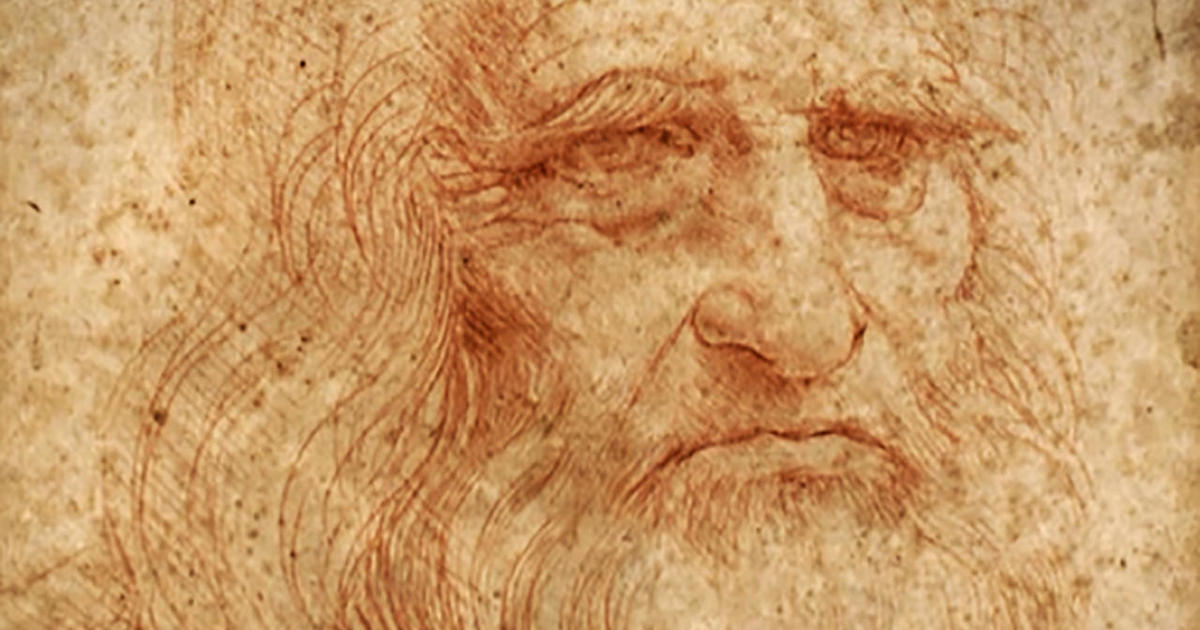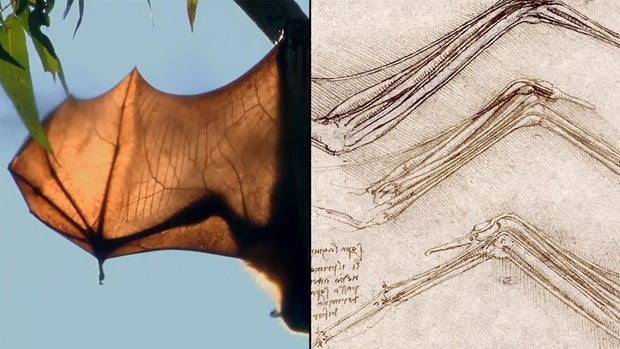Ever since he got a movie camera for his 17th birthday, Ken Burns has been making documentaries. Over the years, he’s created 36 documentary series for PBS, all of them about American history, from “The Civil War,” “Baseball” and “Jazz,” to “Prohibition,” “The Vietnam War” and “Muhammad Ali.”
Now, he’s just made his first project ever that’s not about an American subject: “Leonardo da Vinci.” “It was just getting to know one of the most incredibly interesting human beings who has ever walked the Earth,” Burns said. “And the fact that he turns out to be arguably the greatest painter and certainly the greatest scientist of his age is, you know, extra added.”
Burns co-directed the show with his daughter, Sarah Burns, and her husband, David McMahon.
To watch a trailer for the documentary “Leonardo da Vinci” click on the video player below:
The four-hour series makes use of the approximately 6,000 notebook pages Leonardo left behind, from studies in such disciplines as geology and physics, to his preparatory studies for his paintings. And then there are his to-do lists. What emerges is a portrait of a genius, who’s not just a painter, not just a scientist, not just an inventor.
“He wants to know everything about everything,” said Sarah Burns. “So, he’s dissecting a cadaver because he wants to understand how the heart works and how the body works, all towards creating a painting that is more life-like, more believable, more alive.”
Ken Burns said the “gigantic” volume of source material asks fundamental basic questions: “Where did I come from? Where am I going? How does the universe work? I mean, these are things that occupied him every single moment of every single day.”
What also emerges is a man who rarely finished anything. “There’s fewer than 20 paintings that exist today, probably less than half of those are actually finished, we think,” said Sarah Burns.
Ken Burns says he doesn’t believe it’s a mark of procrastination: “I think things are left unfinished, or undelivered to patrons, because the questions that he was asking of this work for himself had been satisfied.”
Sarah added, “Being interested in so many different things as he was, there’s always the next thing, a new question, something else that comes along that takes away his attention.”
Two things DaVinci did finish, though, are among the most famous paintings ever made: “The Last Supper” and “Mona Lisa.”
“‘The Last Supper’ was a very commonly painted subject for Leonardo’s time,” said McMahon. “Leonardo discovers a completely different thing happening than most other painters had. This is Christ telling his disciples that one of them is going to betray him. And he puts them in groups. And so, one is putting his hand over his eyes, another is reaching for a knife. And so, it becomes a painting that feels like seconds unfolding. And it makes me feel like he would have been a filmmaker, today, had he lived in our time.”
CBS News
“I think he invents film,” said Ken Burns. “There’s a kind of inherent dynamism and movement to it that’s just exquisite.”
Of “Mona Lisa,” Burns said, “In order for him to be a great painter, he has to understand the circulatory system. He has to understand about hair. He has to understand about geography and rock formations and mist and how atmosphere works. And so, my wish is that nobody ever makes a joke about her smile ever again! Because she is embodying the entire human project in that thing.”
If you’ve ever edited photos or videos on an iPhone or a Mac, you may already know one of Burns’ favorite editing techniques: Zooming or panning across a still image, a process, he says, meant to “shake alive something that is two-dimensional.”
But the new documentary, narrated by Keith David, introduces techniques that will be very new to Burns aficionados: split screens that juxtapose old and modern footage.
According to Sarah Burns, Leonardo da Vinci was a lateral thinker: “He made connections across all of these disciplines. Showing multiple things on screen at the same time was a way of, in some ways, visually illustrating Leonardo’s thought process.”
PBS
Asked about the balance of labor for the project, Saran Burns said, “Dave and I are the writers of this. And then once we have our script, we begin our editing process. And that’s when we get in there all together and work on making it better, together. Occasionally, we disagree about what that should be.”
But Ken Burns doesn’t automatically get the final word: “No! That doesn’t work,” he said. “That doesn’t wash with collaboration.”
“Leonardo da Vinci” airs on PBS in mid-November. It’s the story of a fascinating man and an astonishing life. “He could feel, I think, quite rightfully, that he had lived a fuller life than practically anybody I’d ever come across, in any study, in any period. Period,” said Burns.
WEB EXTRA: Ken Burns on the “incredibly modern” Leonardo da Vinci:
For more info:
Story produced by Jay Kernis. Editor: Emanuele Secci.
See also:
More from Ken Burns:



